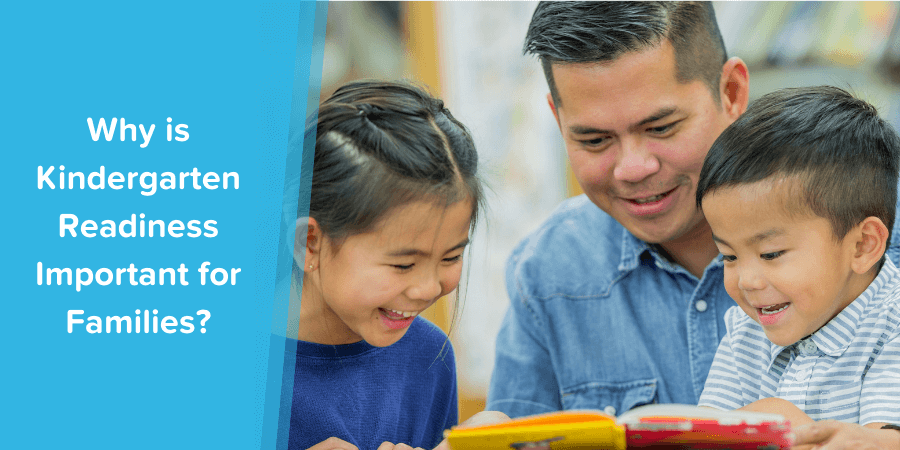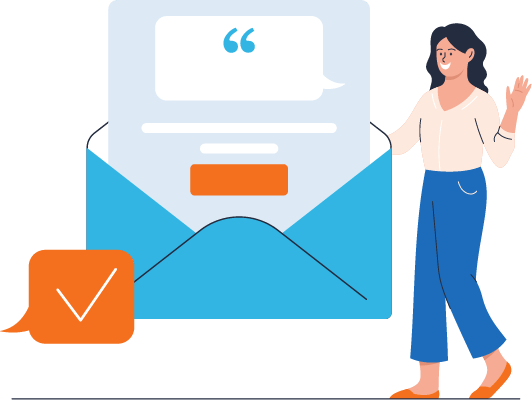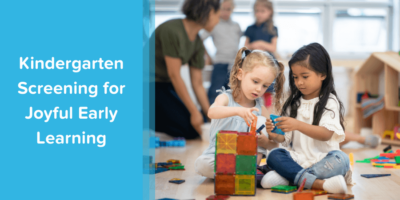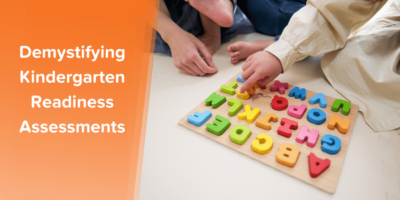By Maren Madalyn, contributing writer
A friend of mine recently asked me for help in her search for kindergarten readiness resources. Though she had read plenty of books and blog posts, she still had unanswered questions about the upcoming transition for her son (let’s call him Leo). “Something’s missing!” she exclaimed to me over the phone. “I can’t put my finger on it, but I feel like I’m missing really important information here.”
As a former classroom counselor who worked in a kindergarten classroom, I knew firsthand how big a change this would be. I also knew that a child who was school ready would often fare more positively during those early years of learning than kids who struggled with basic skills. And as someone who has written about this very topic, I grew curious about this missing information.
What wasn’t working across the myriad of resources she had gathered? What additional resources would help her and Leo get kindergarten ready?
So I dug deep. Most of the books she’d curated unpacked a dozen questions, such as “why is kindergarten readiness important?” and “which academic skills do experts recommend children develop before entering the classroom environment?” and “why are early numeracy skills essential?”

All excellent questions, but not the ones she needed to answer.
I continued exploring. My friend also uncovered an impressive number of articles exploring the purpose of a kindergarten readiness assessment and what to expect during a kindergarten screening. She even found local community resources in her neighborhood that offered services specifically for families of transitioning early learners.
As I combed through the list, I couldn’t help but notice that all of these resources were thorough, practical, and well-vetted — and all of them concentrated on preparing a child for success in school.
Then it dawned on me. My friend didn’t need more kindergarten readiness tools for Leo; she needed resources about family readiness for kindergarten.
And it made complete sense to me. The transition from preschool or child care programs into formal classroom instruction is a major change. It impacts the entire family unit, not just kindergarten-aged children.
So to help Leo and his mom prepare, I reached out to the ParentPowered team with immense expertise in family engagement in education and asked:
Why is kindergarten readiness important for their family? What can educators do to prepare the entire family to be school ready?
Here’s what I learned!

Why is kindergarten readiness important, anyway?
Research shows that early childhood experiences and learning have lasting effects that extend into the classroom and beyond. Kids that demonstrate stronger school readiness are more likely to experience positive academic outcomes later in their school journeys. This is essential because academic success broadly has connections with improved social, economic, and health outcomes which benefits the larger community.
At a high level, kindergarten readiness refers to a wide range of developmental milestones, skills, and signs of positive growth in children. Educators, pediatricians, and researchers summarize the factors of healthy development into five core domains. These areas correlate with a child’s success in transitioning to a formal classroom environment and with successful social, emotional, and academic learning later in school.
According to the Head Start Early Learning Outcomes Framework (ELOF), for example, these five factors boil down to:
- Approaches to Learning
- Social and Emotional Skills
- Literacy and Language Skills
- Cognitive Development
- Motor Skills and Physical Development
The ELOF is one of many models available to parents, educators, and child care providers. Another handy example is the Developmental Milestones published by the Centers for Disease Control and Prevention. These frameworks primarily serve guides for families, schools, and communities to support little learners in their early years of growth.
But here’s the thing: the transition from home or preschool into a kindergarten classroom is also a big change for parents, caregivers, and guardians. In fact, kindergarten readiness in families is as important as it is in students. Why? Because the tone that educators set in kindergarten affects how parents feel about school for the rest of elementary and secondary grades.
This is where the power of family-school-community partnerships comes into play. Even before a child is eligible to enroll in kindergarten, early childhood educators and community organizations can support parents, caregivers, and guardians to nurture kids’ skills and growth — and help parents get school ready, too!
3 ways to help families get kindergarten-ready
ParentPowered has worked with hundreds of school and community-based organizations to support families of the youngest learners with social, emotional, and cognitive development. Ready4K is an evidence-based set of curricula that offers family activities in support of the five domains of school readiness for children. ParentPowered also supports parents with critical resources to navigate their ever-evolving role in their child’s life, from birth to adolescence.
From our research and experiences with partners in the field, we want to share three ways that a preschool program or other early childhood educators can prime parents for kindergarten readiness alongside their children. These family preparedness strategies set the stage for successful family-school partnerships from the first day of school onward!

1. Establish a welcoming environment for everyone from the start
Parents are a child’s first teachers, and it is well known that family engagement in early childhood education can make a huge difference in bolstering that child’s academic performance and social-emotional development for the long run. At the same time, each family surrounding each child in kindergarten is unique. Factors such as cultural background and personal experiences with school education (both positive and negative) all impact their beliefs about and impressions of the classroom environment. It’s essential that early childhood educators and kindergarten teachers both create positive experiences around school that also account for these unique factors among families.
Creating an equitable learning environment can be challenging for school and community leaders working with early learners, but investments in these strategies are so important in order to give every child the chance to thrive. In their 2019 School Readiness report, the American Academy of Pediatrics emphasized that inequity in kindergarten readiness due to poverty, adverse childhood experiences, and other factors beyond a family’s control can put some children at greater risk of negative learning outcomes.
Integrating strategies that are both culturally responsive and trauma-informed is a great way to promote equity in education as early as preschool. These approaches set a positive tone with families about the kind of school community their child is joining.
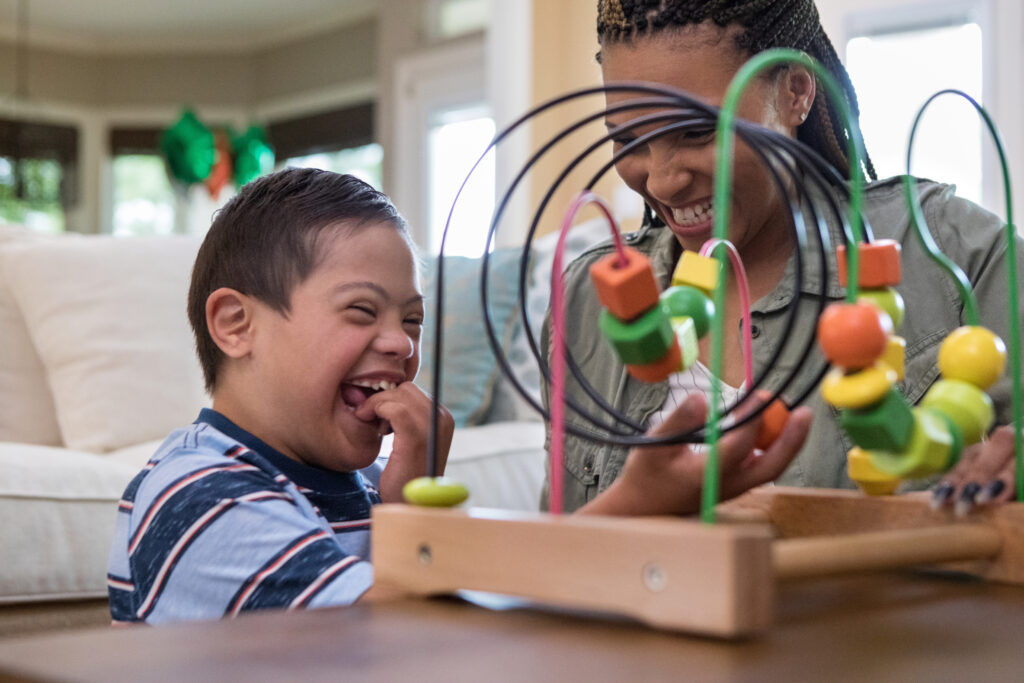
Families from traditionally under-served backgrounds especially benefit from strategies for equitable family engagement that cultivate trust, reciprocity, and readiness for school. In fact, everyone benefits in a community from such practices — and that’s the importance of equity in education, even and especially in a kindergarten classroom.
The right first impression can be catalytic to a family’s entire experience of school education. Here are a few favorite strategies for early childhood education programs to design welcoming environments as families prepare to transition into kindergarten:
- The front office is one of the most commonly visited places on a school campus. Pin up signs and posters in families’ home languages throughout this frequented space to make it feel familiar and welcoming. Consider adding signs specifically for visitors to indicate that they request assistance with translation — that way, front office staff can arrange support to break down language barriers and ensure this parent gets the help they need!
- What else can your team do to create a welcoming environment? Taking time to regularly reflect on this can help educators surface less obvious ways in which families from different backgrounds may experience a preschool program or classroom setting. For families from historically disadvantaged backgrounds, it is especially crucial to identify even subtle changes needed for that positive first experience. These guiding questions from Wisconsin Center for Education Research offer a great starting point for both early childhood educators and kindergarten teachers.
- Download and share our “Insider’s Guide to Great Public Schools” for families. This is an excellent resource for families of kindergarten-aged children entering school for the first time. It briefs them on the essentials of the school experience, with tips encouraging families to check the school calendar, stay in touch with their school, and much more. (Want a resource specifically for families new to the United States? Keep reading below!)
Read our article for more insights about building culturally responsive family engagement practices across the entire school community.

2. Build habits of two-way communication
As families in preschool or child care programs prepare their child for formal classroom instruction, they may not immediately know how to communicate with their schools. Who do they call when their child is sick and needs to miss a day of school for a doctor’s appointment? Where do they ask questions about school drop-off, or school lunch? Parents may not even realize that their school wants them to reach out with questions or for support from school staff!
Early childhood educators also really need to hear from their families, as do elementary school staff. Parents hold a wealth of knowledge about their child and can offer educators vital information to help a preschool teacher or future kindergarten teachers support that student’s learning. Teachers in turn benefit from hearing about that student’s behaviors and growth in the home environment to understand that child’s development more holistically.
Two-way communication habits are the key to bridging critical information between home and school. Establishing these routines early with families in preschool or other early childhood programs is a great way to ensure their readiness for school when transition time comes.
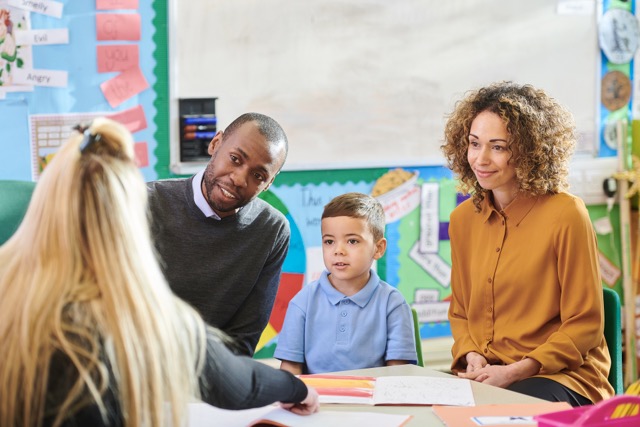
These communication practices help educators promote bidirectional information flow between families and their preschool program, and prepare them for similar communication in kindergarten:
- Actively seek input from parents about what works or doesn’t work for their child’s learning. When practiced in preschool, this builds a muscle for families to share their expertise about their child with teachers in kindergarten and beyond. It also gives a preschool teacher critical information that helps them guide their instructional practices with the child.
- Encourage families to post important contact information for early childhood education programs somewhere visible in their home, such as on their refrigerator. That way, all the information needed is readily accessible if and when they need to connect with staff. This tip also works wonders for families in elementary school. Don’t forget to clarify who or where parents may contact their school for what purpose!
- Develop a habit of regular outreach through digital tools. These days, there are a wide number of ways for families and programs to connect virtually through resources such as blogs, newsletters, and more. One of the most equitable methods of communication is text messaging. It’s why ParentPowered delivers its family engagement resources to families through text, ensuring every family receives support for early childhood development and even parent-child interaction. As a bonus, early childhood programs and elementary schools can also survey families via text to quickly collect their input throughout the year.
For families new to the US school system, download and share our “Welcome to School” guide, available in four languages. This resource is designed specifically for these families to help navigate the basics with school, such as the importance of regular attendance, communication with staff and teachers, and ways they can get involved.
3. Celebrate both the family and child’s strengths
Strengths-based approaches are powerful in family-school partnerships, especially in the early days of classroom learning. These methods of engagement emphasize a family’s existing skills, knowledge, and assets available rather than pinpoint deficits or gaps.
Families preparing for transitioning into the kindergarten environment benefit when educators take time to understand the strengths that each family has to offer to their student’s learning. Educators can also prime incoming families of kindergarten-aged children to keep the learning going outside of classroom instruction. Even as their child builds independence and new skills, families can help them continue to grow in age-appropriate ways.
This is why ParentPowered’s ParentPowered curricula offers resources and activities for families that fit into existing home routines. Families can leverage everyday moments and resources around them to nurture fundamental skills in their little learners. For example, as you can see from our example family math activity on the right, a child’s morning routine is a perfect opportunity for families to cultivate a preschooler’s math skills — no extra equipment necessary!
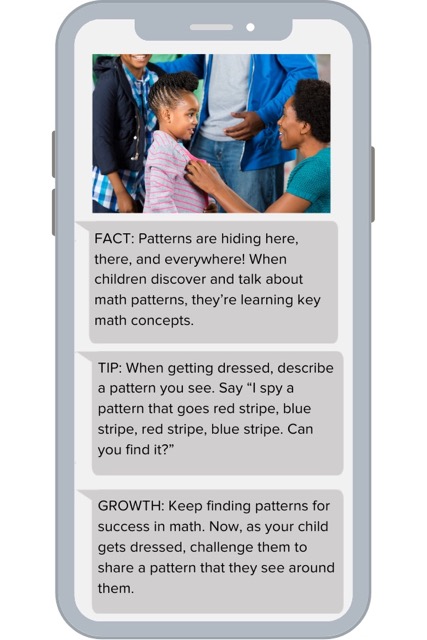
Cultivating a strengths-based mindset in parents of early learners is a powerful way to boost both parent confidence and support for the individual child. Read our recent article for more inspiration in guiding families at-home learning, through a new kind of kindergarten readiness checklist.
In addition to celebrating family strengths, it’s also essential to highlight a child’s strengths as they prepare to enter kindergarten. When a preschool teacher points out a student’s adeptness with, say, remaining determined in the face of challenges, that child’s parents gain a new understanding of how their student’s unique traits can support their learning journey, both in the first years of school and much later. For educators, this communication with parents in turn contributes to a steady foundation of trust and relationship with their families that they will likely lean upon in future.
A great way for a preschool or kindergarten teacher to celebrate a child’s strengths with families is by sending regular messages with positive updates about a child’s progress. For example, Johnny’s preschool teacher might send a note home in his backpack to celebrate successful moments from the day, like when Johnny managed his frustration when his stack of blocks fell over. These little victories are worth celebrating with families.
And, when Johnny has a not-so-positive day — say, if he hits a child that takes one of his blocks — his preschool teacher can rely on this bridge of trust already established with Johnny’s parents. Aligning with families around a child’s strengths can be critical to family-school collaborations around a child’s opportunities for growth, whether it involves shifting behaviors or practicing specific developmental skills.

The power of family partnership in kindergarten readiness
This is by no means an exhaustive list of the ways that educators can promote kindergarten readiness in families. But my biggest take away is this. If little Leo is making positive progress with his motor, cognitive, and social skills — and his mom has been primed for positive family engagement with school — then everyone will transition through this big change smoothly.
No matter which methods educators use, it’s critical to remember that kindergarten readiness isn’t just about helping children develop skills or hit certain growth milestones. It’s about building a community of support that centers that child’s success in school, relationships, and much more. It’s about transitioning the entire family unit into school culture and classroom instruction. Parents, caregivers, and guardians need to be kindergarten-ready, too!

About the author
Maren Madalyn has worked at the intersection of K12 education and technology for over a decade, serving in roles ranging from counseling to customer success to product management. She blends this expertise with fluid writing and strategic problem-solving to help education organizations create thoughtful long-form content that empowers educators.

